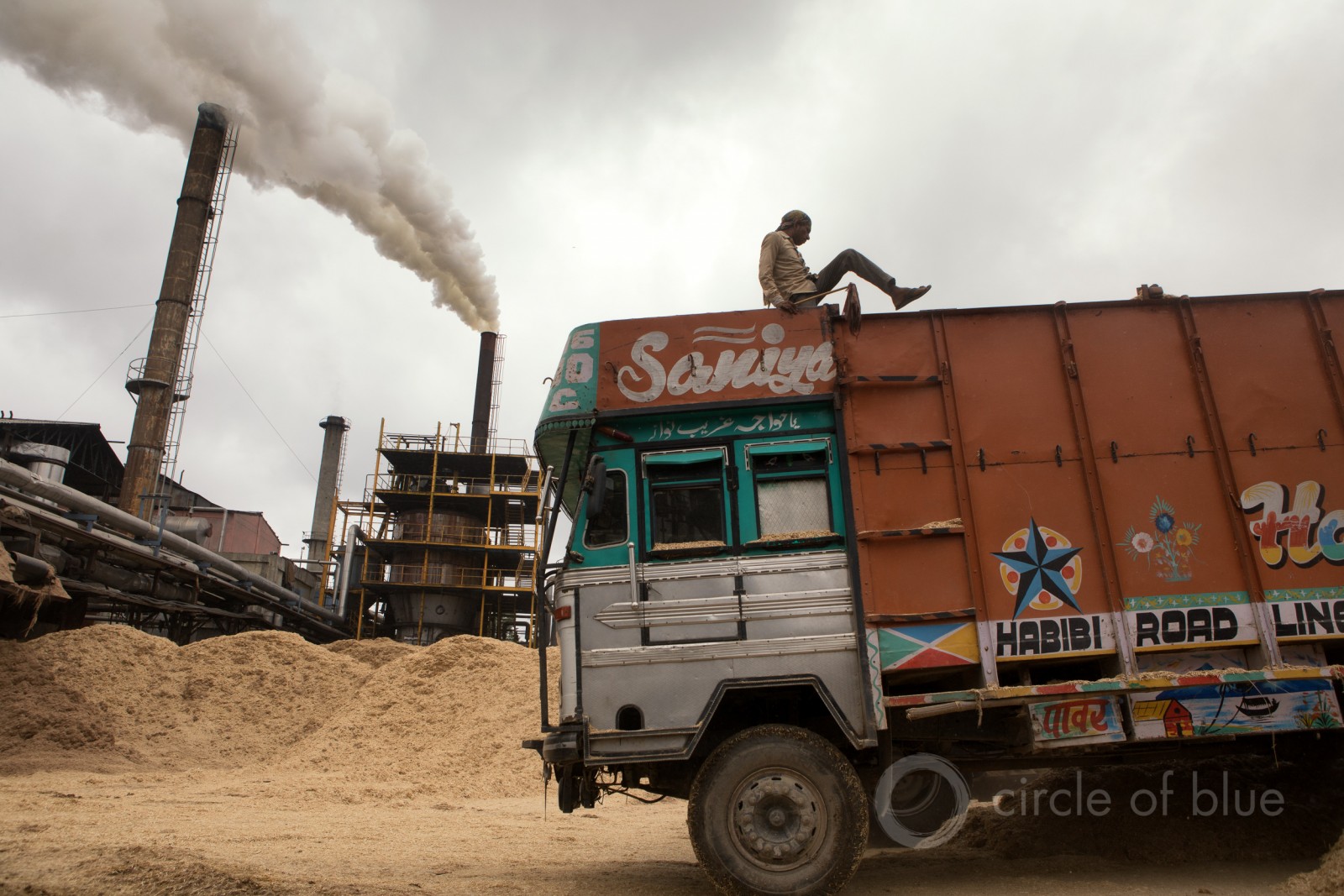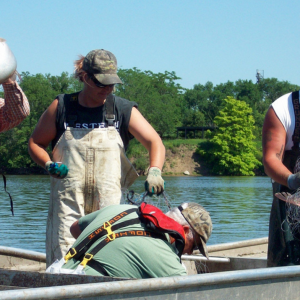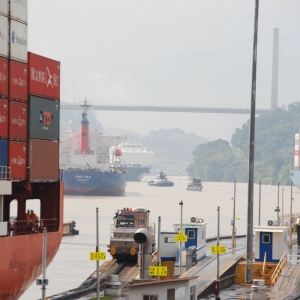The Stream, July 12, 2023: Severe Downpours Flood New England States, Southwest Japan

Sugar cane stalks and other fibrous plants are used as pulp to make paper near Muzaffarnagar, in the Indian state of Uttar Pradesh. Photo © J. Carl Ganter / Circle of Blue
YOUR GLOBAL RUNDOWN
- Scarce rains in India’s sugar-growing regions diminish cane yields.
- Extreme flooding throughout the U.S. Northeast spurs emergency orders, water rescues, and evacuations.
- In parts of southwestern Japan, the region’s ‘heaviest rain ever’ has led to mudslides, power outages, and fatalities.
- Federal incentives for companies to mine Canada’s far north are likely to harm peatlands, wild rivers, and Indigenous homelands, environmentalists say.
Selenium discharge from transboundary mines cause birth defects in Montana fish — impacting water quality, riparian habitat, and Indigenous communities.
“Mine assessment and permitting do not require incorporation of transparent, independent and peer-reviewed science…Teck’s Elk Valley permit allows contaminant discharges up to 65 times above scientifically established protective thresholds for fish.” — excerpt from a letter published in Science in 2020 by a group of scientists concerned about mining pollution.
Environmentalists in Montana have filed suit against Teck Resources, a multinational company based in Canada which owns multiple mines north of the U.S. border, the New York Times reports. The plaintiffs’ concerns center on selenium, a byproduct of coal mining that can be toxic in large concentrations and has been leaking into Montana’s rivers, streams, and lakes — polluting the state’s water and causing fish to be born with deformities.
Limits on the chemical in fresh water vary country to country and lake to river, and Teck has “repeatedly disputed various state and federal regulatory standards.” President Biden and Prime Minister Trudeau “pledged to reach an agreement by this summer to reduce and mitigate the water pollution in the Elk-Kootenay watershed.”
As a result of the selenium, fish in Kootenai/Ktunaxa fisheries have been born with deformities, and “scientists worry that the existing mines could pollute the rivers for centuries.” Teck has applied to open two mines in the Elk Valley.
— Christian Thorsberg, Interim Stream Editor
Recent WaterNews from Circle of Blue
- Bubbles and Electricity Designed to Deter Invasive Carp From Lake Michigan — Des Plaines River is a site of new impediments to voracious species.
- Social Media Used To Warn of Flood Dangers in Northern California — Sonoma County town develops effective messaging network.
The Lead
Last December, the Canadian government announced incentives — including tax breaks, funding, and fast-tracked environmental reviews — for mining companies that choose to operate in its far Northwest Territories, Yale Environment 360 reports. The land, rich in elements needed for electric vehicles and solar power technology, is also plentiful with peatlands and wild rivers.
The good that comes from mining these elements — taking strides toward a post-carbon future — also comes with a drawback: that “the overall benefits of mining might not outweigh its costs to biodiversity and to Indigenous people who live in mineral-rich regions.” Peatlands account for 30 percent of the planet’s soil carbon, and 25 percent of the world’s peatlands are in Canada.
Nonetheless, companies are eyeing “remote regions of the Northwest Territories, Nunavut, and northern Quebec, and in the Hudson Bay Lowlands of northern Manitoba, Ontario, and western Quebec” to set up mining operations. The land is also a crucial habitat for caribou and migratory birds, including sandpipers and dunlins.
The legacy of mining in the Northwest Territories is painful. Abandoned-mine remediation projects, currently underway, last for decades and cost billions of dollars. “Since 2016, all 20,000 Yellowknife residents have been warned by the government to avoid drinking water, swimming, fishing, and harvesting plants and berries in and around several lakes due to their high arsenic levels.”
This Week’s Top Water Stories, Told In Numbers
3 million
Number of people under flood alerts on Tuesday, following extreme rainfall and subsequent flooding throughout the U.S. Northeast, CNN reports. Vermont’s capital has been hit especially hard, with rushing water submerging downtown Montpelier, forcing a state of emergency and multiple evacuations and water rescues. The Winooski River rose 14 feet on Monday, a result of the region’s rainfall being between 300 and 500 percent its usual amount. In New York state, where one woman died in rushing water, emergencies have been declared in six counties. High amounts of rain have also fallen in parts of Connecticut, New Jersey, New Hampshire, and Pennsylvania. Severe downpours are an effect of a warming atmosphere, which holds more water.
2 million
Number of people in southwestern Japan urged to evacuate the region, which over the weekend experienced a month’s worth of rainfall — nearly 20 inches. “These are the heaviest rains ever recorded in the region,” the meteorological agency said. “The situation is such that lives are at risk and safety must be guaranteed.” The heavy rains have triggered mudslides, destroying homes and washing property into growing rivers and streams. Nearly 7,000 households were left without power, France 24 reports. Six people were feared dead amid the rains.
On the Radar
Key sugarcane growing regions in India are experiencing drought — 71 percent less rainfall than normal, Reuters reports. As a result, Indian officials capped exports at 6.1 million tons of sugarcane, compared to 11 million last year.
More Water News
Crawford Lake: The Canadian lake has been designated by scientists to represent the onset of the Anthropocene, Yale Environment 360 reports.
Uganda Pipeline: A planned oil pipeline through Uganda, scheduled for completion in 2025, has “devastated” the lives of thousands of people who have not been compensated for their land, according to Human Rights Watch, Al Jazeera reports.
Christian Thorsberg is an environmental writer from Chicago. He is passionate about climate and cultural phenomena that often appear slow or invisible, and he examines these themes in his journalism, poetry, and fiction.






Leave a Reply
Want to join the discussion?Feel free to contribute!